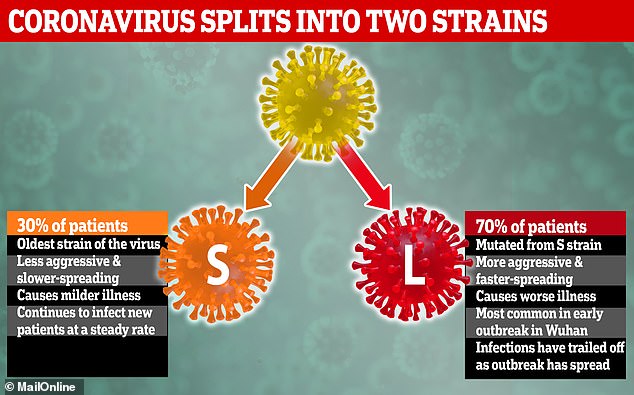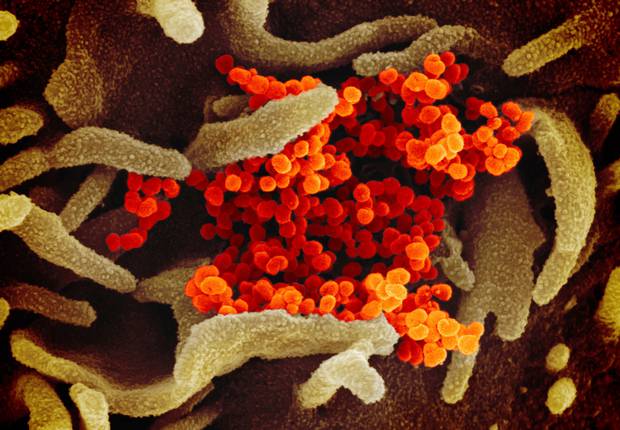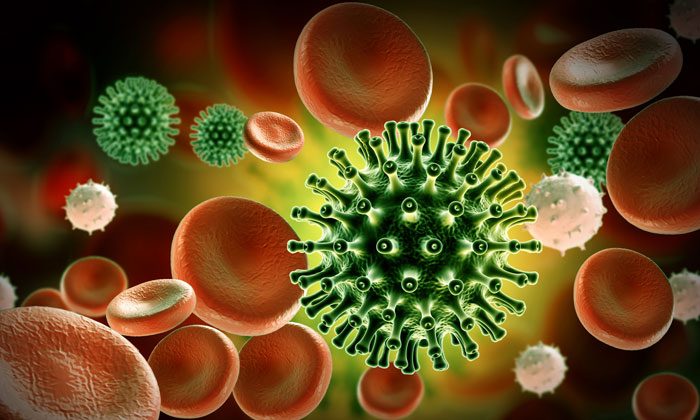Coronavirus has evolved into two major lineages and it is possible to be infected with both, a new study shows.
Researchers at Peking University’s School of Life Sciences and the Institut Pasteur of Shanghai discovered that the virus has evolved into two major lineages – which have been branded “L” and “S” types. The team of experts from Beijing and Shanghai said the newer “L-type” strain spreads quickly and accounts for around 70 per cent of cases. However, the older “S-type”, which was the first known strain, appears to be milder, less infectious and is now becoming the more common strain people are being infected with.
A man who had undergone a genetic analysis after he tested positive on January 21 proved that it’s possible to be infected by both strains. In the paper the researchers, led by Professor Jian Lu and Dr Jie Cui, said: “Whereas the L type was more prevalent in the early stages of the outbreak in Wuhan, the frequency of the L type decreased after early January 2020.

“Human intervention may have placed more severe selective pressure on the L type, which might be more aggressive and spread more quickly.
“On the other hand, the S type, which is evolutionarily older and less aggressive, might have increased in relative frequency due to relatively weaker selective pressure.”
This “human intervention” is thought to be the hospitalisation of people with the virus and the lockdown of areas where it was spreading fast.
Unfortunately, this new development hinders attempts to develop a vaccine.
Dr Stephen Griffin, of the Leeds Institute of Medical Research and chair of the virus division at the Microbiology Society, said developers would need to test whether their prototype vaccines would still neutralise both viruses.

He added the variations between the strains were “fairly limited” and may not be a “huge hurdle”.
“It is usually the case that when RNA viruses first cross-species barriers into humans they aren’t particularly well adapted to their new host – us.” Griffin said.
“Thus, they usually undergo some changes allowing them to adapt and become better able to replicate within, and spread from human-to-human.”
Virologist Professor Jonathan Ball told Telegraph UK that he believed a larger study needed to be done before worrying about vaccine hurdles.
“At the moment we don’t have hard evidence that the virus has changed with regards to disease severity or infectivity so we need to be cautious when interpreting these kinds of computer-based studies, interesting as they might be,” he said.
Dr Bharat Pankhania, senior clinical lecturer at the University of Exeter Medical School, said it was impossible to know why the more aggressive strain has slowed down.
“We don’t really know the true picture in China,” he said. “Is the lower number of cases a true reflection? It could be the virus mutating to a less dangerous form, or it could be the superhuman lockdown measures.
“Or there could be a third reason which is genetic drift. RNA viruses are quite mistake-prone so over time they become not very good at replicating.”













![Hotstar Premium Cookies 2019 [*100% Working & Daily Updated*] Hotstar Premium Cookies 2019 [*100% Working & Daily Updated*]](https://tahav.com/wp-content/uploads/2019/11/Hotstar-Premium-Cookies-Free-100x70.jpg)



